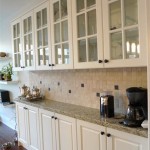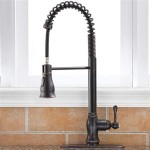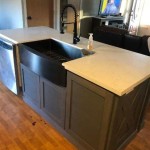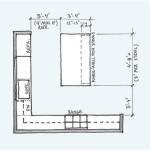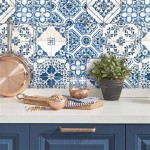Understanding Kitchen Drawer Rear Mounting Brackets
Kitchen drawer rear mounting brackets are essential components often overlooked, yet they play a crucial role in the stability, functionality, and longevity of kitchen drawers. These brackets, attached to the rear of the drawer box, provide a secure connection point for the drawer slides, ensuring smooth and reliable operation. Understanding their purpose, types, and installation processes is vital for both homeowners and professionals involved in kitchen renovation or construction.
This article aims to provide a comprehensive overview of kitchen drawer rear mounting brackets, covering their definition, function, the different types available, factors to consider when selecting them, and a detailed guide to their installation and maintenance. This information will empower readers to make informed decisions regarding their kitchen drawers and ensure that they function optimally for years to come.
The Function and Importance of Rear Mounting Brackets
The primary function of a kitchen drawer rear mounting bracket is to provide a solid and stable attachment point for the drawer slides at the back of the drawer box. Drawer slides, often made of metal, are designed to allow drawers to smoothly glide in and out of cabinets. They require secure mounting points at both the front and the rear of the drawer to function correctly. The rear bracket essentially reinforces the often thinner material of the drawer back, preventing screws from stripping out and ensuring a strong and even connection.
Without a rear mounting bracket, the drawer slides would be directly attached to the drawer back, which is typically made of plywood or particleboard. These materials are often not strong enough to withstand the constant pulling and pushing forces exerted on the drawer when it's opened and closed, particularly when the drawer is heavily loaded. Over time, the screws holding the drawer slides to the drawer back can loosen, causing the drawer to become wobbly, sag, or even detach completely. This can lead to frustration and potentially damage the drawer, cabinet, and its contents.
Furthermore, rear mounting brackets contribute to the overall alignment and stability of the drawer. When properly installed, they ensure that the drawer slides are perfectly parallel, which is crucial for smooth and consistent drawer operation. Misalignment can cause the drawer to bind, stick, or make noise when being opened or closed. The rigidity provided by the bracket prevents the drawer back from flexing or warping, further contributing to the drawer's stability.
In essence, kitchen drawer rear mounting brackets act as a vital support system, extending the lifespan of the drawer and improving its overall functionality. Their importance cannot be overstated, especially in high-use kitchen environments where drawers are frequently opened and closed and often carry substantial weight.
Types of Kitchen Drawer Rear Mounting Brackets
Kitchen drawer rear mounting brackets come in a variety of styles and materials, each designed to meet specific needs and preferences. Understanding the different types available is essential for selecting the most appropriate bracket for a given application. The selection often depends on the drawer box construction, the type of drawer slide being used, and the desired aesthetic.
Metal Brackets: Metal brackets are among the most common and durable options. They are typically made of steel or aluminum and offer excellent strength and stability. Steel brackets are generally more robust and can handle heavier loads, while aluminum brackets are lighter and corrosion-resistant. Metal brackets come in various shapes and sizes, with some featuring pre-drilled holes for easy installation. They are often coated with a powder finish to prevent rust and provide a clean, professional look.
Plastic Brackets: Plastic brackets are a more affordable option and are suitable for lighter-duty applications. They are typically made of durable plastics like nylon or polypropylene. While not as strong as metal brackets, plastic brackets are resistant to moisture and corrosion, making them a good choice for kitchens where spills are common. They are also lightweight and easy to install. However, it is important to choose high-quality plastic brackets to ensure they can withstand the stresses of regular drawer use.
Wood Brackets: Wood brackets offer a more traditional and aesthetically pleasing option. They are typically made of hardwoods like maple or oak and can be stained or painted to match the surrounding cabinetry. Wood brackets provide a solid and stable mounting point for drawer slides and can be customized to fit specific drawer dimensions. However, they are more susceptible to moisture damage than metal or plastic brackets and may require additional sealing or finishing to protect them from spills.
Clip-on Brackets: Clip-on brackets are designed for quick and easy installation. They typically feature a clip or hook that attaches to the drawer back, eliminating the need for screws or other fasteners. Clip-on brackets are often used with specific types of drawer slides and may not be compatible with all drawer box constructions. They are a convenient option for DIY projects or when replacing existing brackets.
Adjustable Brackets: Adjustable brackets allow for fine-tuning of the drawer's alignment. They typically feature slotted holes or adjustable screws that allow the user to adjust the position of the drawer slide slightly. Adjustable brackets are particularly useful when installing drawers in older cabinets where the dimensions may not be perfectly consistent. They can help to compensate for minor imperfections and ensure smooth and reliable drawer operation.
The choice of bracket type should be based on a careful assessment of the drawer's weight, frequency of use, the type of drawer slide being used, and the desired aesthetic. Selecting the right bracket will contribute significantly to the drawer's overall performance and longevity.
Factors to Consider When Selecting Rear Mounting Brackets
Choosing the correct rear mounting brackets is crucial for ensuring the long-term functionality and stability of kitchen drawers. Several factors should be considered during the selection process to ensure compatibility, durability, and ease of installation.
Drawer Box Construction: The construction of the drawer box is a primary factor in determining the type of rear mounting bracket to use. The thickness and material of the drawer back will influence the bracket's size, shape, and attachment method. For example, a drawer with a thin particleboard back may require a larger bracket with multiple screw holes to distribute the load and prevent stripping. Conversely, a drawer with a solid wood back may be able to accommodate a smaller bracket with fewer fasteners.
Drawer Slide Type: The type of drawer slide being used is another critical consideration. Different drawer slides have different mounting requirements, and the rear mounting bracket must be compatible with the slide's design. Some drawer slides require specific types of brackets, such as clip-on brackets or brackets with pre-drilled holes that align with the slide's mounting points. Consult the drawer slide manufacturer's specifications to determine the appropriate bracket type.
Weight Capacity: The expected weight load of the drawer should also be taken into account when selecting rear mounting brackets. Heavier drawers require stronger brackets made of durable materials like steel. The bracket's weight capacity should be clearly stated by the manufacturer, and it is important to choose a bracket that can safely support the maximum anticipated weight. Overloading a drawer can cause the brackets to fail, leading to drawer instability and potential damage.
Material and Durability: The material and durability of the rear mounting bracket are important factors, especially in high-use kitchen environments. Metal brackets are generally the most durable option, but plastic or wood brackets may be suitable for lighter-duty applications. Consider the potential for moisture exposure and choose a bracket that is resistant to corrosion or water damage. Look for brackets that are made of high-quality materials and are designed to withstand the stresses of regular drawer use.
Ease of Installation: The ease of installation is another important consideration, especially for DIY projects. Choose brackets that are easy to install with basic tools and that come with clear instructions. Clip-on brackets are often the easiest to install, but they may not be suitable for all drawer box constructions or drawer slide types. Consider the level of experience and choose brackets that match the user's skill level.
Aesthetic Considerations: In some cases, the aesthetic appearance of the rear mounting bracket may be a factor. Wood brackets can be stained or painted to match the surrounding cabinetry, while metal brackets are often available in a variety of finishes. Choose brackets that complement the overall design of the kitchen and that do not detract from the aesthetic appeal of the drawers.
By carefully considering these factors, the most appropriate rear mounting brackets can be selected, ensuring the long-term functionality, stability, and visual appeal of kitchen drawers. This careful selection process will ultimately contribute to a more satisfying and functional kitchen experience.

Richelieu Tu304rb2g Rear Support Bracket For Installing Stainless Stee

Kitchen Drawer Rear Mounting Brackets Swisco Com

The Builder Economy Line Bld Cpds E Shr

Grass America Inc 13156 17 Universal Rear Mount Socket For 6610 Series Slides Left Hand Each Cream Hardware Hut

Hr Max Adjustable Plastic Rear Bracket For Use Series Undermount Drawer Slides With 8 Mm Dowels

Hr Max Rear Mounting Bracket With 10 Mm Plastic Dowels For Soft Close Ball Bearing Slides

Drawer Slide Face Frame Bracket For Kv8400 The Cabinet Door Store

Knape And Vogt 2070 Rbpa Plastic Rear Mounting Bracket With Dowels Cabinetparts Com

Fr402 Rear Mounting Brackets Left Right

Hr Max Adjustable Plastic Rear Bracket For Undermount Drawer Slides With 8 Mm Dowels
See Also

